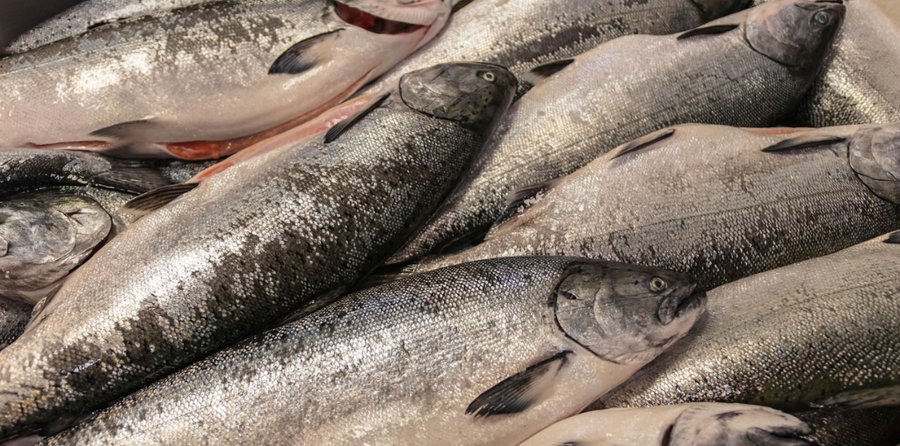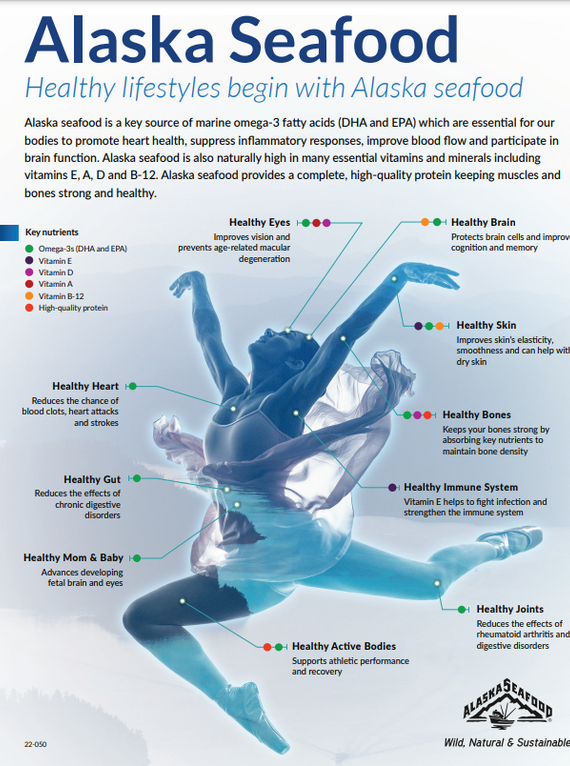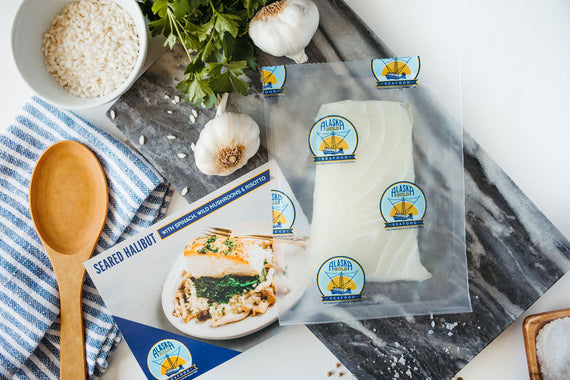
There is no purer, more natural source of protein than wild seafood. Lean but dense with nutrients at the same time, seafood is a perfect protein for athletes.
Achieving peak form is a goal for all of us, whether we’re pro, amateur, or not even practicing athletes. And seafood should be part of all of our diets. Our wild Alaska Gold Seafood is particularly good for athletes.

Seafood helps athletes…
Recover faster
Convert protein and sugar to energy as an excellent source of vitamins B6 and B12
Augment blood flow
Reduce swelling
Maximize fat loss by lowering triglycerides
Develop focus and mind function
Maintain strong and healthy bones with its exceptionally high vitamin D content
Optimize aerobic capacity
Expand lung performance
Improve joint health
Here’s another huge secret: Cooking our seafood, for example our wild coho salmon portions, is easier than cooking other kinds of proteins. At home, we use sea salt and olive oil, serve with greens, or a pasta with pesto sauce. It’s a meal made in less than 15 minutes. Here are some tips for cooking salmon.
In addition, our Easy Salmon, packed in one-pound bags, is so versatile for making a diverse array of recipes, perfectly packaged for a family of four or a hungry couple. It’s possible to affordably incorporate wild salmon into your meal plan. Here are a couple of customer recipes: an Easy Salmon red curry with coconut cauliflower rice or this Easy Salmon, potato and leek hash with egg recipe.
Joe Friel and Loren Cordain’s The Paleo Diet for Athletes notes that we should eat animals of the highest quality at virtually every meal. When it’s wild and as real as possible, not fed at a grain stall in a feedlot, it’s best. And wild seafood has an optimal fat, protein, and nutrient profile.
Wild seafood from colder waters, like those of Alaska, have very high concentrations of Omega-3 fatty acids. We know Omega-3 fatty acids are good for the heart–they’re associated with a significant reduction in coronary artery diseases. In addition, Omega-3s from marine sources (i.e., wild seafood) are more easily absorbed and digestible than other sources.
Wild seafood has the ideal ratio of omega-3 to omega-6 fatty acids. Most nutritionists agree that people should target a 2:1 ratio of Omega-6s to Omega-3s. But, for most Americans, that ratio is closer to 10:1. (Non-grass fed) red and/or processed meats, junk foods, and certain oils are too high in Omega-6 and cause the imbalance. Fish, particularly fatty fish from cold waters, like salmon and sablefish, are by far the richest source of Omega-3s. In contrast, Omega-6s are associated with inflammation, which can counteract exercise’s positive effects on insulin sensitivity and metabolic benefits, negatively impacting muscle soreness, tissue repair, and other aspects of recovery. Omega-3s improve joint health by easing joint stiffness and combating chemicals that destroy cartilage. Indeed, according to the Clinical Journal of Sports Medicine, consuming Omega-3s can be effective in relieving muscle soreness induced by exercise.
Eating seafood also helps decrease triglycerides by up to 14% which increases high density lipoprotein (good) cholesterol and improves function of blood vessels, maximizing fat loss, improving lung performance by improving blood flow and therefore oxygen performance, all of which results in better recovery and improved health for athletes.
Lean animal protein lowers blood LDL (bad) cholesterol and increases HDL (good) cholesterol, and provides muscle-building branched-chain amino acids. Protein should come from lean and varied meats, making up 30% of our diet. Fat, which should predominantly be monounsaturated, is also an essential component of our diet.
One half of our 8 ounce king salmon portions makes for 4 ounces each of heart-healthy omega-3s with 28 grams of protein to rebuild muscles and promote recovery. These wild salmon filets also may help lose body fat. The DHA in Omega-3s can reprogram genes so that carbs are broken down by body and not stored as fat. Seafood’s high concentrations of vitamins B6 and B12 helps convert protein and sugar to energy.



